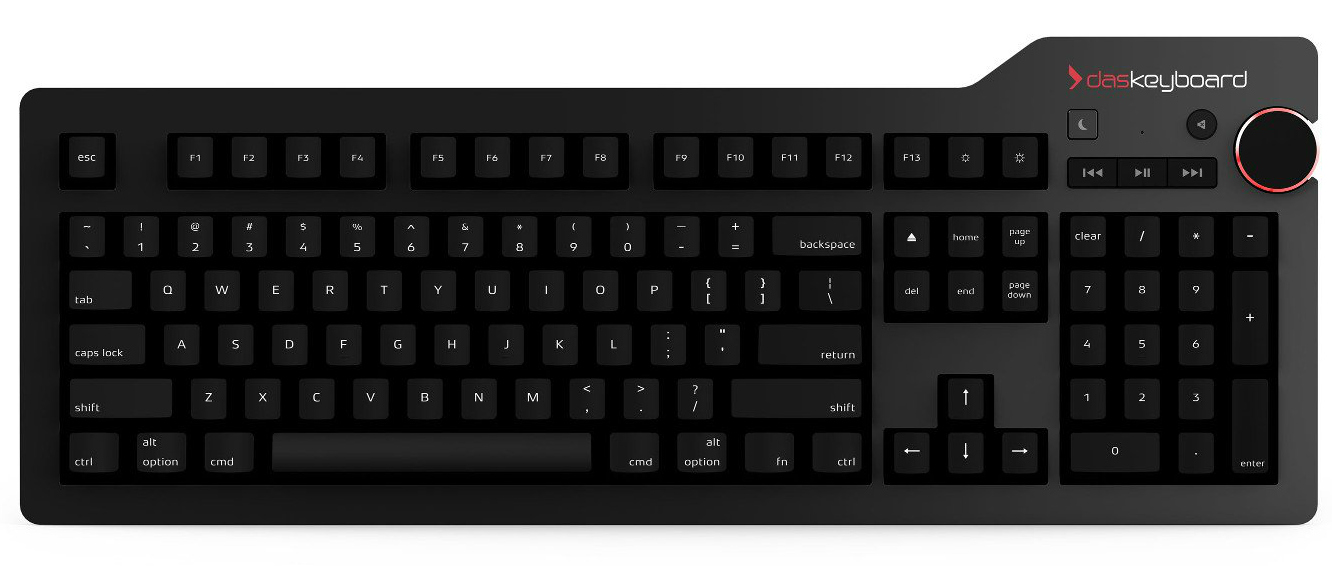Before we were all typing on perfectly flat touchscreens and paper-thin laptop keyboards, we communed with our word processors and Web browsers through hulking plastic keyboards, the kind that came pre-boxed with a 1990s Dell. With the rise of predictive typing and gestural interaction, one might think keyboards would wane in significance. But not much has changed with our keyboards—in fact, they’re getting more retro than ever.
Technology aestheticians, the power users who know exactly which battery case goes best with a certain smartphone or what stand-up desk is most fashionable, are increasingly adopting mechanical keyboards to complete their gear collections. In sharp contrast to the weightless, wireless keyboards of late, these devices are heavy. They clatter impressively when you type; they feel significant. That’s because mechanical keyboards reach back to an earlier era, when a little bulk in your tech was something to value.
“There was a cool factor that people saw in it,” says Daniel Guermeur, the founder of Das Keyboard, a mechanical keyboard manufacturer that launched in 2005. “‘Wow, that keyboard is badass.'” Badass is not a word we typically associate with mundane computer equipment. But over the past several decades—the time between when mechanical keyboards were all that existed (the iconic mechanical Model M Keyboard was first manufactured by IBM in 1984) and their contemporary revival—mainstream users have come to appreciate their technological gear in a whole new way. If we obsess over our iPhones, why not our keyboards as well?
“There was a cool factor that people saw in it. ‘Wow, that keyboard is badass.’”
Guermeur started his business with a surprising realization. “My typing was always really slow. If my keyboard was blank I would not look at the keys,” he says. So Guermeur got a blank keyboard built in China and “doubled my speed in six weeks.” From blank keyboards, the company expanded into high-end mechanical ones, available for around $90 a piece. “A Dell keyboard is made for $2 to $3,” Guermeur says. In March 2015, Das launched a Mac-oriented mechanical keyboard that comes in two flavors, according to just how sturdy the act of pressing a key becomes.
The Das Keyboards don’t look out of the ordinary—they’re sleek, black plastic planks with raised keys attached, plus a number pad and audio controls attached on the right side. But it’s the interior, not the exterior, that counts.

All modern keyboards work with a system of buttons and switches. Push down a key and a switch is triggered that registers the action electronically, to be translated into a letter or symbol on-screen. But in a mechanical keyboard, the switch is more elaborate. Das’ blue switch is “clicky”—as a key is pressed down, it clicks audibly before hitting the bottom surface of the keyboard. It’s springy and pushes back against the finger. Mechanical keyboards have been decried for their ability to disrupt office work with their artisanal noise, but Das’ brown switch version is softer and more pliable, thus quieter.
Both are improvements on the basic experience of typing that verge on the poetic. “When you push the key down from top to bottom, you need a travel distance. Lower profile keys hurt the fingers, so you want to have a good switch on each key, that’s the foundation of the keyboard,” Guermeur says. “The keyboard is like an instrument, you type on it and it’ll vibrate a certain way.”
Indeed, the contrast between working on a normal keyboard and a mechanical one is like the difference between writing with a disposable ballpoint pen and a fancy Montblanc. The latter upgrade certainly feels better, and it might hold up a little longer in the ordeal of daily use. But the real question is, is it worth the added expense and preciousness? Does a mechanical keyboard communicate the thoughts it’s filtering any more effectively?

As we come to think more about our technological devices as fashionable objects—Beats headphones, the latest iPhones, two Fitbits per wrist—fetishizing their non-functional aspects is unavoidable. The mechanical keyboard doesn’t quite fall into this trap, since the difference is highly physical, and it impacts the experience of the device. But perhaps these nostalgic innovations feel slightly thin because we’ve stopped worrying so much about increases in speed, or data capacity, or computing power. Now it’s just down to aesthetics. The size and thinness of the screen. The wrapping of the circuit boards instead of the boards themselves.
So we prize fashionability over our own experience of technology. In fact, the two are often confused for each other. “It’s probably looking very good to have a very thin keyboard, but they don’t feel good,” Guermeur says. “Before there was cheap manufacturing to save cost, now quality is coming back as a trend.” In this case, quality is also a fashion—albeit a temporary one—for a piece of technology that reaches back to a more physically authentic era of computing.
Are we getting tired of all this immateriality, the slipperiness of our screen keyboards and the impersonal act of auto-complete and correct? Perhaps, but those digital tools at least smooth our communication. Keyboards still tend to get in the way. Instead of actuated mechanical buttons, I’d rather have a self-cleaning keyboard, or one that aided me in a less mechanical way with my writing. Omnipresent autocorrect leaves me wishing that the right keys somehow slid magically underneath my fingers, or sorted themselves into just the right word for the screen.
No matter how fashionable the technology, it rarely seems to work any better.

Disruptions is Kyle Chayka’s weekly column for Pacific Standard about personal technology and the way it influences our daily lives.
Lead photo: Computer keyboard. (Photo: Marcie Casas/Flickr)





